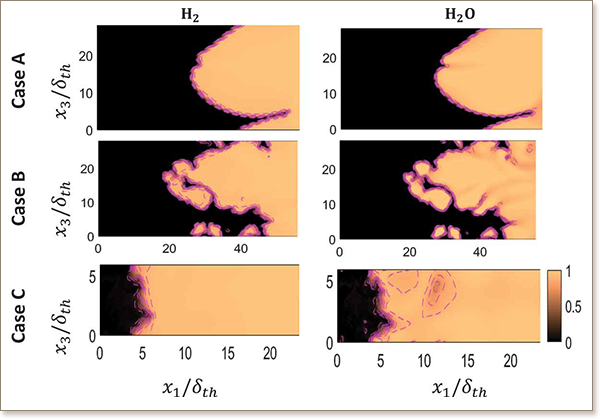

Surface density function statistics in hydrogen-air flames for different turbulent premixed combustion regimes
N. Chakraborty, M. Klein, D. Alwazzan, H.G. Im
Combustion Science and Technology 190 (11), pp. 1988-2002, (2018)

The choice of reaction progress variable (RPV) on the statistical behavior of the surface density function (SDF) and the strain rates, which govern the evolution of SDF, have been analyzed using a detailed chemistry Direct Numerical Simulation (DNS) database of freely propagating statistically planar -air flames with an equivalence ratio of 0.7. The DNS database consists of three cases spanning the corrugated flamelets (CF), thin reaction zones (TRZ) and broken reaction zones (BRZ) regimes of premixed turbulent combustion. For this analysis, the RPV is defined based on the mass fractions of H2, O2 and H2O. The mean variations of the SDF and the flame displacement speed, , have also been found to be dependent on the choice of the RPV. The progressive weakening (strengthening) of the preferential alignment of the RPV gradient with the most extensive (compressive) principal strain rate with increasing Karlovitz number leads to changes in the behaviors of normal and tangential strain rates from one combustion regime to another. The differences in displacement speed statistics for different choices of RPV affect the behaviors of the normal strain rate due to flame propagation and curvature stretch. The relative thickening/thinning of the reaction layers of the major species has been explained in terms of the statistics of effective normal strain rate experienced by the -isosurfaces for different choices of RPVs.